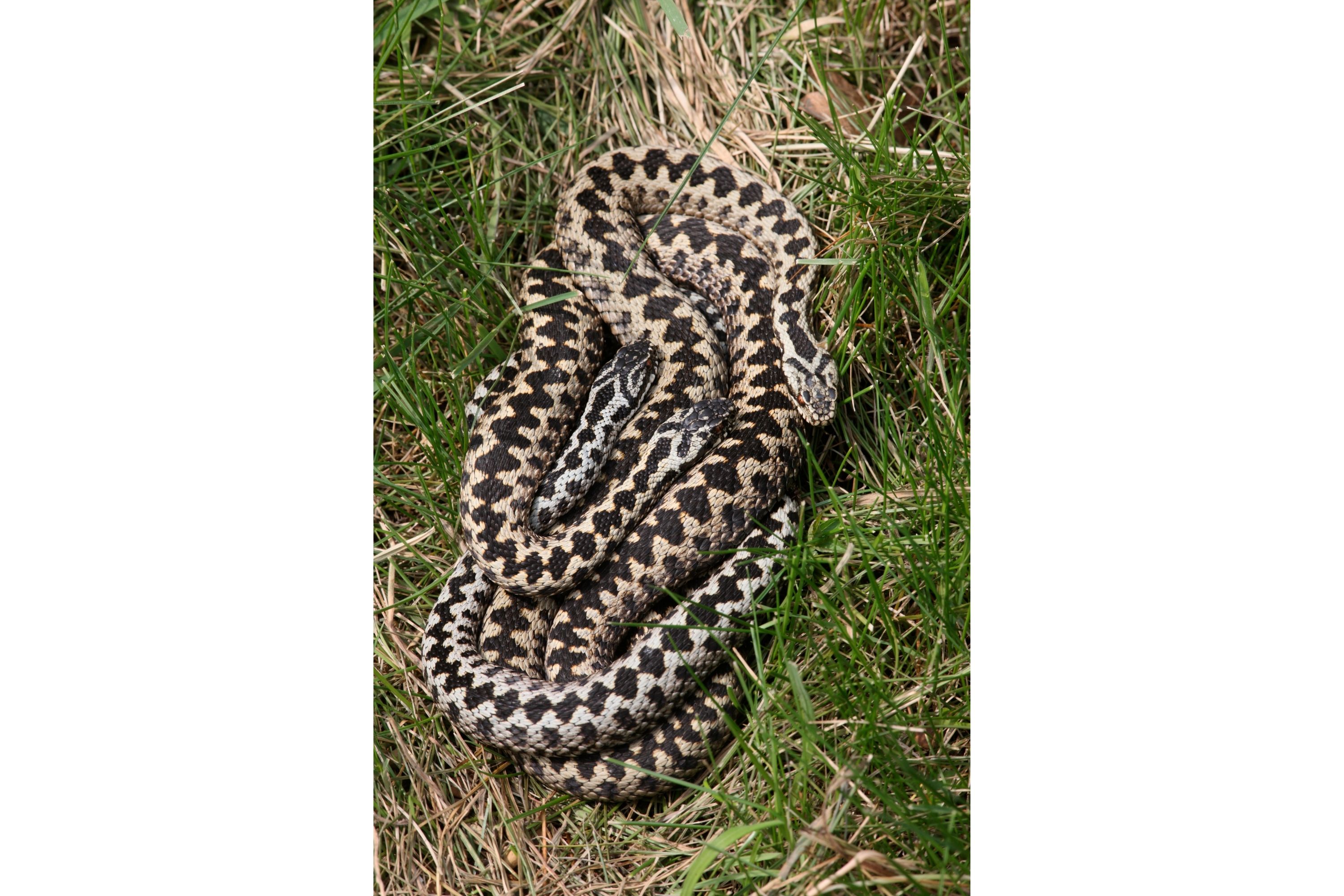Common European viper
(Vipera berus)

Description
Vipera berus, the common European adder or common European viper, is a venomous snake that is extremely widespread and can be found throughout most of Western Europe and as far as East Asia. Known by a host of common names including common adder and common viper, adders have been the subject of much folklore in Britain and other European countries. They are not regarded as especially dangerous; the snake is not aggressive and usually bites only when really provoked, stepped on, or picked up. Bites can be very painful, but are seldom fatal. The specific name, berus, is New Latin and was at one time used to refer to a snake, possibly the grass snake, Natrix natrix. The common adder is found in different terrains, habitat complexity being essential for different aspects of its behaviour. It feeds on small mammals, birds, lizards, and amphibians, and in some cases on spiders, worms, and insects. The common adder, like most other vipers, is ovoviviparous. Females breed once every two or three years, with litters usually being born in late summer to early autumn in the Northern Hemisphere. Litters range in size from three to 20 with young staying with their mothers for a few days. Adults grow to a total length (including tail) of 60 to 90 cm (24 to 35 in) and a mass of 50 to 180 g (1.8 to 6.3 oz). Three subspecies are recognized, including the nominate subspecies, Vipera berus berus described here. The snake is not considered to be threatened, though it is protected in some countries. The head is fairly large and distinct and its sides are almost flat and vertical. The edge of the snout is usually raised into a low ridge. Seen from above, the rostral scale is not visible, or only just. Immediately behind the rostral, there are two (rarely one) small scales. The eye is relatively large—equal in size or slightly larger than the nasal scale—but often smaller in females. Below the supraoculars are six to 13 (usually eight to 10) small circumorbital scales. The temporal scales are smooth (rarely weakly keeled). There are 10–12 sublabials and six to 10 (usually eight or 9) supralabials. Of the latter, the numbers 3 and 4 are the largest, while 4 and 5 (rarely 3 and 4) are separated from the eye by a single row of small scales (sometimes two rows in alpine specimens).
Taxonomic tree:







